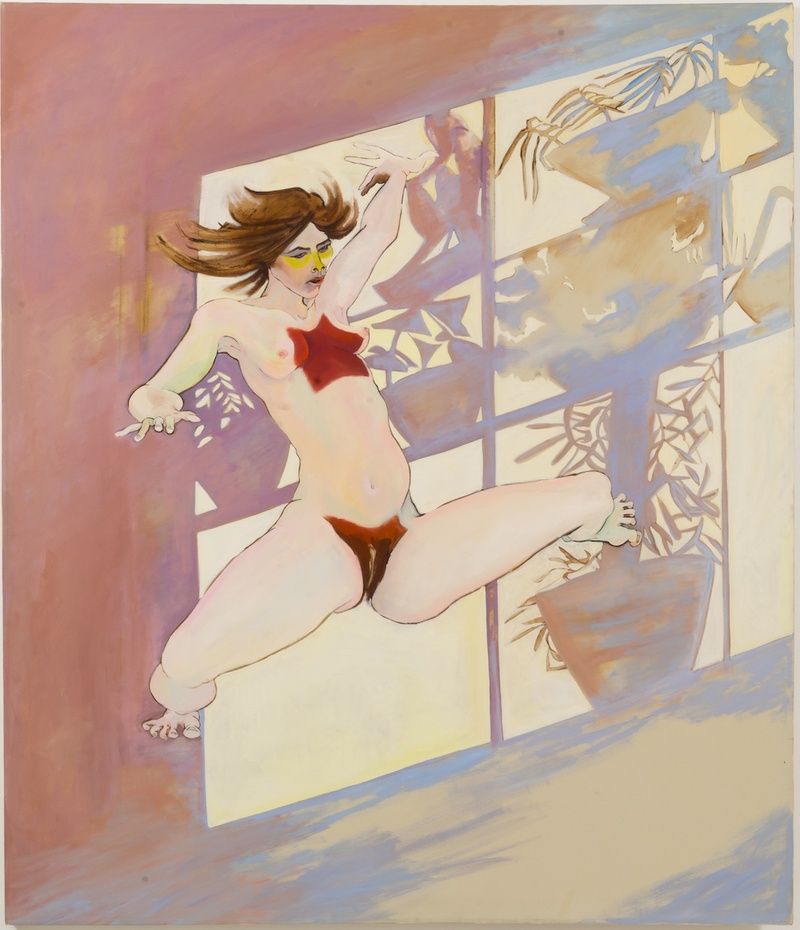James Fuentes Gallery
Juanita McNeely
Moving Through
James Fuentes is pleased to present Juanita McNeely’s historic nine-panel painting, Moving Through (1975), stretching the length of the gallery’s New York exhibition space. Achieving an ambitious scale by combining multiple panels, paintings like this one occupied an important place throughout McNeely’s oeuvre. Aside from initial drawings visualizing their final sequence and composition, these works were oftentimes made without knowing when they'd ever be seen in totality. This presentation marks the fifth anniversary since the gallery’s debut exhibition with the artist, which followed a similar format, spanning the entire exhibition space to highlight a single, thirteen-panel work titled Triskaidekaptych (1986).
Alongside efforts like these, toward the end of her lifetime McNeely was able to see her large-scale works installed in major museums and collections, including the nine-panel Is It Real? Yes, It Is! (1969), acquired by the Whitney Museum of American Art in 2022 and currently on view on their 7th floor. As well, the artist’s four-panel Woman’s Psyche (1968) was acquired and presented in the Rubell Museum DC’s inaugural exhibition (2022-2023), and is presently on view in the Rubell Museum Miami. Most recently, Moving Through (1975) was shown in Los Angeles alongside two seven-panel works, From the Black Space I (1976) and From the Black Space II (1977). The latter of the two is now on view in For Dear Life: Art, Medicine, and Disability through February 2, 2025, at the Museum of Contemporary Art in San Diego as a part of The Getty’s PST ART: Art & Science Collide initiative.
From the inception of her creative practice, McNeely has produced figurative work that defies the conventions of art history, approaching the human form as a source of power, emotion, movement, and rupture. In the 1950s, when formal artistic training entailed life drawing with models (“their stillness seemed deadly, lacking of life”), McNeely insisted upon rendering the figure from her own memory, informed by an intent, continual observation of people and the way they moved in the world. More broadly, when Abstract Expressionism dictated innovation, she instead drew influence from the vibrance and physicality of German Expressionism—challenging figuration to absorb her sensations and improvisations. In this way, even in her portraits of others, essential to comprehending McNeely’s work is her own experience of the body as a site of intense aliveness, endurance, pleasure, and pain. Asked about the prominence of blood in her work, McNeely offers: “That's how you give birth. That's how you die. That's how you live."
Juanita McNeely (1936-2023) was born in St. Louis, Missouri, and lived and worked in New York City. She studied an MFA from Southern Illinois University, and a BFA from the St. Louis School of Fine Arts at Washington University. McNeely was part of the Fight Censorship group founded in 1973 by Anita Steckel, alongside peers including Judith Bernstein, Louise Bourgeois, Martha Edelheit, Joan Semmel, Hannah Wilke, and Eunice Golden; as well as Women Artists in Revolution (W.A.R.), Redstockings, and other artist activist groups. A survey exhibition of her work, Indomitable Spirit, curated by Susan Metrican, was presented at Brandeis University’s Women’s Study Research Center in 2014. McNeely has been the subject of solo exhibitions at James Fuentes, Mitchell Algus Gallery, Montclair State University, and Elaine Benson Gallery, and has been featured in group exhibitions at the Whitney Museum, Rubell Museums, and Museum of Contemporary Art in San Diego. Her work is in the collections of the the Whitney Museum; Women's Studies Research Center at Brandeis University; the Minneapolis Institute of Art; the National Museum of History & Art in Taipei; the Oakleigh Collection at Skidmore College; Palacio de las Bellas Artes in Mexico City; the Rubell Collection; the Morris Library at Southern Illinois University; and the William and Uyendale Scott Memorial Women Artists Study Collection at Bryn Mawr College.

Panel 2 of Moving Through, 1975
Oil on canvas
9 panels, overall: 84 × 408 inches
Works

Moving Through, 1975
Oil on canvas
9 panels, overall: 84 × 408 inches

Panel 1 of Moving Through, 1975
Oil on canvas
9 panels, overall: 84 × 408 inches

Panel 2 of Moving Through, 1975
Oil on canvas
9 panels, overall: 84 × 408 inches

Panel 3 of Moving Through, 1975
Oil on canvas
9 panels, overall: 84 × 408 inches